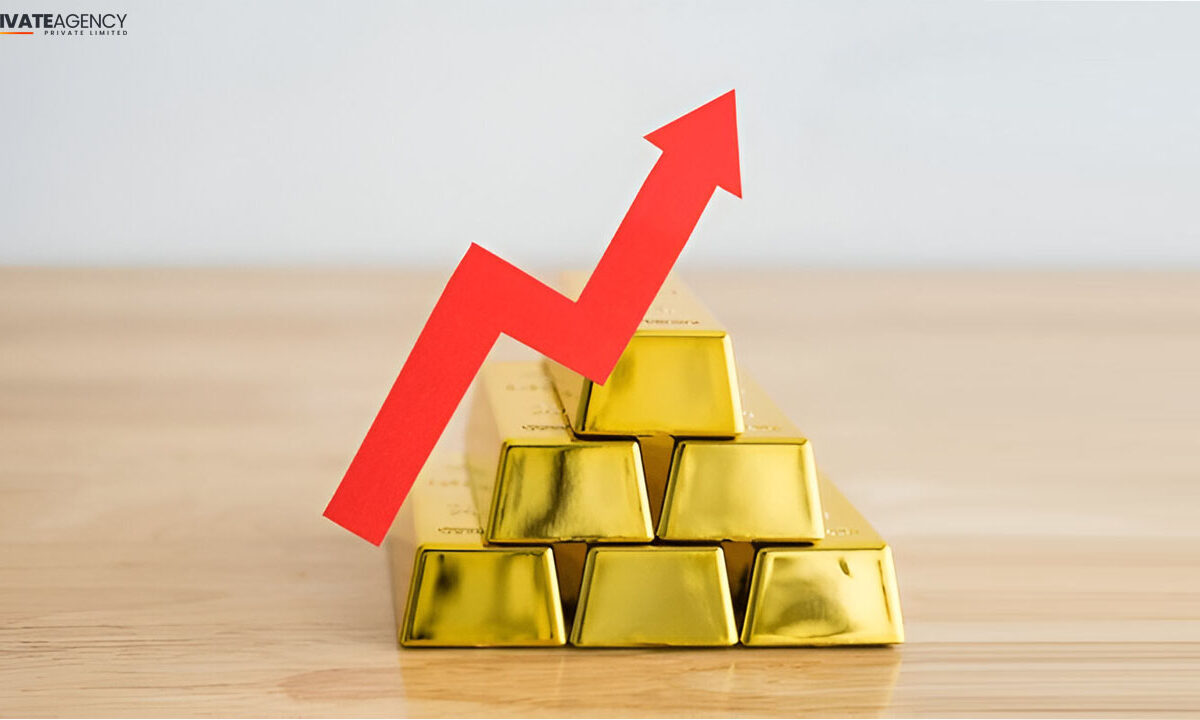Hello, fellow curious minds! If you’ve been keeping an eye on the financial news lately, you’ve probably noticed something shiny catching everyone’s attention: gold. In 2025, we’re witnessing a remarkable gold price surge, and it’s got investors, markets, and even everyday consumers buzzing with questions. Why is this happening? What’s driving the precious metal prices 2025 to new heights? And what does it mean for you, whether you’re an investor or just someone intrigued by the world of commodities?
In this comprehensive blog post, we’re diving deep into the key reasons behind the bullion value increase in 2025. We’ll explore global economic shifts, investor behaviour, supply challenges, and more—all in a friendly, conversational British English tone. Expect real stats, credible sources, and practical insights to help you navigate this golden phenomenon. So, grab a cuppa, and let’s uncover why gold is the talk of the town in 2025!
Global Economic Drivers of the Price Surge
Inflation and Currency Weakening Worldwide
First up, let’s talk about the elephant in the room: inflation. In 2025, global inflation is soaring, and it’s pushing people towards inflation-resistant assets like gold. When prices for everyday goods skyrocket, the value of fiat currencies—like the pound or the dollar—starts to wobble. This financial market uncertainty makes gold, a timeless economic safe haven, look incredibly appealing.
Why? Unlike paper money, which governments can print endlessly, gold is a finite resource with intrinsic value. As inflation erodes the purchasing power of cash, gold becomes a go-to for hedging against inflation. The World Gold Council reports that global inflation rates have hit their highest in decades, with some countries even facing hyperinflation. For instance, emerging markets are seeing currency volatility that’s driving demand for gold as a store of value investment.
The weakening US dollar is another piece of the puzzle. As the dollar loses steam, gold becomes cheaper for those holding other currencies, boosting demand and pushing up the price of bullion 2025. It’s a classic economic dance, and gold is leading the waltz.
Central Bank Accumulation of Physical Reserves
Now, here’s where it gets really interesting: central banks are stockpiling gold like never before. In 2025, central bank reserves rising is a major driver of the gold price surge 2025. Countries like China, Russia, and India are beefing up their gold holdings, and it’s not just for show.
According to the International Monetary Fund (IMF), global central bank gold reserves have jumped by over 20% since 2020. Why the rush? Gold offers long-term asset security and acts as a stable investment option in a world where the US dollar’s dominance is under scrutiny. Central banks see gold as a non-yielding asset that’s liquid and reliable—perfect for weathering economic storms.
This non-yielding asset demand isn’t just a trend; it’s a strategic move. By diversifying away from dollar-heavy reserves, central banks are sending a clear signal: gold is back in vogue. And when these big players buy up physical asset demand, it tightens supply and nudges prices higher.
Investor Behaviour During Market Turbulence
Precious Metals as a Shelter Against Risk
Let’s shift gears to the investors—both the big fish and the everyday folks like you and me. In 2025, global markets are a rollercoaster, thanks to lingering post-pandemic effects, geopolitical tensions, and inflation woes. Naturally, people are flocking to gold for market volatility protection.
Gold’s reputation as an economic safe haven isn’t new, but its appeal is stronger than ever. Institutional investors—like hedge funds and pension schemes—are piling into gold to shield their portfolios. A World Gold Council survey shows that over 60% of institutional investors now hold gold, up from 40% in 2020.
Meanwhile, individuals are embracing it as a store of value investment to safeguard their savings.
This isn’t just about avoiding losses; it’s about wealth preservation strategies. When stocks and bonds wobble, gold shines. It’s no wonder the rising asset prices of gold are making headlines in 2025.
Retail and Institutional Demand Trends
Here’s a fun fact: it’s not just the suits driving this trend. Retail demand for investing in precious metals is booming too. The World Gold Council notes a 30% spike in demand for gold bars and coins since 2020. People want tangible assets they can hold, especially in uncertain times.
Emerging markets like India are leading the charge, accounting for over 25% of global physical asset demand. Meanwhile, digital gold platforms and exchange-traded funds (ETFs) are making it easier than ever to jump in. Global gold ETF holdings have soared by 50% since 2020, per the World Gold Council, as investors seek exposure without the hassle of storage.
What’s the takeaway? Whether it’s physical bullion or digital shares, the asset price forecast for gold is looking golden, driven by a diverse crowd of buyers.
Supply Challenges and Mining Sector Pressures
Production Constraints in Key Regions
While demand is through the roof, supply is struggling to keep up—classic economics at play. The mining sector outlook for 2025 isn’t rosy, with production flatlining since 2019, according to the World Gold Council. Why? Gold mining is getting tougher.
Ore grades are declining, meaning miners have to dig deeper and work harder for less gold. This jacks up costs and slows output. Plus, the COVID-19 hangover lingers—supply chain snags and labour shortages in places like South Africa and Australia are crimping production. The result? A supply-demand gap that’s fuelling the gold price surge 2025.
The rare earth market trends also play a role here. As demand shifts to metals for green tech—like lithium—gold miners face stiffer competition for resources, adding pressure to the industrial metal pricing landscape.
Environmental Regulations and Industry Shifts
On top of that, the world’s going green, and gold mining isn’t exempt. Stricter environmental regulations are forcing miners to clean up their act, which is great for the planet but tough on output. The World Gold Council says production costs have risen by 20% since 2020, partly due to compliance with eco-rules.
This ties into broader commodity market trends. As governments push for sustainability, miners are investing in cleaner tech—think electric equipment over diesel. It’s a costly shift that’s shrinking supply in the short term. Add in monetary policy impact on metals—like higher interest rates affecting investment—and you’ve got a perfect storm for fiscal hedging tools like gold to shine.
Comparing Safe-Haven Assets for 2025
Metals vs. Other Inflation-Hedge Instruments
Gold isn’t the only game in town when it comes to safe-haven commodity options. So, how does it stack up against alternative investment options like bonds, real estate, or other metals like silver? Let’s break it down.
Historically, gold outperforms during crises. Take the 1970s: inflation hit double digits, and gold soared by over 2,000%, per the World Gold Council. Bonds and real estate? They lagged behind. Fast forward to 2008—gold rose 30% while stocks tanked. In 2025, with inflation roaring, gold’s proving its worth as an
inflation-resistant asset.
Silver and platinum have their fans, but they’re more tied to industrial metal pricing and less reliable as pure safe havens. Real estate can be a solid value-holding resource, but it’s illiquid and vulnerable to market dips. Gold’s edge? It’s portable, universal, and thrives on non-yielding asset demand.
The Role of Government Bonds and Index Funds
What about stable investment options like government bonds? They’ve long been a go-to, but in 2025, they’re losing lustre. With interest rates low and global debt at record highs (thanks, IMF data!), bond yields are pitiful. Plus, they carry counterparty risk—governments can default, rare as that is.
Index funds offer diversification across stocks and bonds, but they’re still tied to market whims. Gold? It’s immune to those swings, making it a standout in global asset movement. The rising asset prices of gold in 2025 highlight its unique role in a shaky financial world.
What the Future Holds – 2025 and Beyond
Expert Projections and Economic Models
So, where’s this metal trading forecast headed? Experts are optimistic. The World Gold Council predicts gold could hit $3,000 per ounce by late 2025, up from $2,000 earlier this year. Goldman Sachs pegs it at $2,500, while Citigroup also eyes $3,000, citing physical asset demand and inflation fears.
These asset price forecasts hinge on ongoing uncertainty—think trade tensions, climate shocks, and debt piles. Gold’s status as a value-holding resource keeps it in the spotlight, with demand showing no signs of slowing.
What Could Reverse the Trend?
But nothing’s set in stone. A global economic recovery could cool the gold price surge 2025. If inflation eases and confidence returns, investors might ditch gold for riskier bets. The interest rate impact on assets is another wildcard—higher rates could make bonds tempting again, sapping gold’s appeal.
Supply boosts—like breakthroughs in mining tech—could also tip the scales, though the mining sector outlook suggests that’s a long shot for now. For 2025, though, market volatility protection keeps gold on top.
Key Questions About the 2025 Gold Price Surge
What Causes Precious Metal Prices to Rise?
Precious metal prices 2025 climb due to inflation, currency woes, and economic uncertainty. Gold, especially, thrives as a safe-haven commodity when trust in fiat falters.
Is Now a Good Time to Invest in Physical Assets?
It depends on your goals, but with financial market uncertainty high, investing in precious metals like gold could be a smart move for wealth preservation strategies.
How Do Central Banks Impact Market Demand?
Central bank reserves rising boosts demand by tightening supply and signalling gold’s value as a stable investment option.
What Are Safe Investments During Inflation?
Look to inflation-resistant assets like gold, real estate, or commodities—anything with intrinsic value that holds up when prices soar.
Will Prices Continue to Increase in 2025?
The metal trading forecast says yes, driven by inflation and demand, though a recovery or rate hikes could shift commodity market trends.




